Today, we have a guest post from a talented, award winning writer, Elaine Faber. She  has a number of mysteries published, including a four-book series centered around a cat who can actually solve crimes, and a three book series set during World War II. She’s multi-published in magazines and over twenty anthologies. But today she’s telling us a little about her latest mystery, The Spirit Woman of Lockleer Mountain. It weaves together mysteries about a secret government installation, a missing sister who may have amnesia, drug sales to teenagers, and sightings a illusive woman in a flowing green dress with a mountain lion, who just might be the legendary Native American Spirit Women.
has a number of mysteries published, including a four-book series centered around a cat who can actually solve crimes, and a three book series set during World War II. She’s multi-published in magazines and over twenty anthologies. But today she’s telling us a little about her latest mystery, The Spirit Woman of Lockleer Mountain. It weaves together mysteries about a secret government installation, a missing sister who may have amnesia, drug sales to teenagers, and sightings a illusive woman in a flowing green dress with a mountain lion, who just might be the legendary Native American Spirit Women.
And as you can see below, Elaine has an excellent sense of humor. You can expect to see some of that in this delightful book. And this book has a great cover that sells!
The blurb on the back of my latest mystery, “The Spirit Woman of Lockleer Mountainbriefly outlines the storyline. ‘While the government plans to build a secret facility, housing tract, and big box store that will easily put the local merchants out of business, someone is selling drugs to the teenagers on the nearby Native American reservation…
In addition, the frequent sightings of a mysterious woman in a flowing green dress accompanied by a mountain lion has Deputy Sheriff Nate Darling wondering if she is his missing sister, out of her mind and running with a mountain lion, or is she the legendary Native American Spirit Woman sent to help the troubled town?”
As an author, I always hold out hope for the chance to catch the attention of the big publishing house, but these days, agents are only interested in working with someone famous or possessing a platform of 10,000. We, of lesser fame and fortune must resort to Indie Publishing and self-promotion. Beyond writing a compelling plot and interesting dialogue, we must master the skills of publicist, bookkeeper, full time blogger, cover artist, and skilled orator, always keeping an eye open for opportunities to sell a book we happen to have handy in a large canvas bag.
I’ve become passably competent at most of the above skills, but I recently learned of another talent to master…In the off chance that I should run into that elusive literary agent on an elevator, or sipping a Carmel Macchiato at Starbucks, I must have memorized what is called in the publishing world, an “elevator pitch.” Once I have the agent’s momentary attention, I must deliver a compelling ‘hook,” and within sixty seconds, convince him everyone from a Texas cowboy to a New York stockbroker will buy my book with his last green dollar, and that it will become a Best Seller.
I have practiced my ‘elevator pitch’ in front of a three-way mirror and perfected where to smile, when to pause for special effect, and when to use hand motions to emphasize the final sentence.
 Unfortunately, I fear if I should ever be fortunate enough to find myself on that much discussed elevator, in spite of good intentions and hours of practice, I expect the conversation would more likely go something like this.
Unfortunately, I fear if I should ever be fortunate enough to find myself on that much discussed elevator, in spite of good intentions and hours of practice, I expect the conversation would more likely go something like this.
“Uh… You’re that Random House guy, right! Wait. Let me push this button and stop the elevator. I never thought… I have some notes here somewhere. Where is that paper? Well, never mind. I wrote a book, see? You’re not going anywhere special, right? About that book I wrote… You’re gonna love it. It’s called The Spirit Woman of Lockleer Mountain. Do you like cats? There’s a mountain lion. That’s a cat, right? This lady goes missing in an accident and then there’s a mountain lion and a Native American spirit woman shows up. So, about this cat…see….
****
The Spirit Woman of Lockleer Mountain is available at Amazon in e-book for $3.99. http://tinyurl.com/y7rp7f3x
Elaine Faber is a member of Sisters in Crime, Cat Writers Association, and Northern California Publishers and Authors. Her short stories have appeared in national magazines. Please leave a comment. Click on “Leave a Reply” just below. We will respond. Thanks.

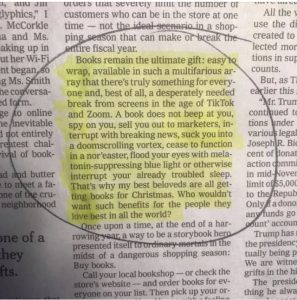 This came to me through various routes, so I cannot give credit to the author. But I’m sure the author will be happy to see it passed to others. And writers should most certainly take it to heart. I’d be happy to hear your thoughts on this so leave a comment by clicking on the bubble at the top. And thanks for visiting the author’s blog.
This came to me through various routes, so I cannot give credit to the author. But I’m sure the author will be happy to see it passed to others. And writers should most certainly take it to heart. I’d be happy to hear your thoughts on this so leave a comment by clicking on the bubble at the top. And thanks for visiting the author’s blog.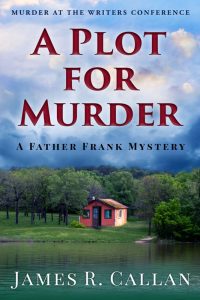


 and tragic-comic bubble and squeak. —William Harrison Ainsworth, New Monthly Magazine, review of Moby Dick by Herman Melville (1851)
and tragic-comic bubble and squeak. —William Harrison Ainsworth, New Monthly Magazine, review of Moby Dick by Herman Melville (1851)

 Home School Enrichment who now creates novels where hope and quirky meet. She is also the co-founder of the blog Stitches Thru Time. When not writing, she enjoys spending time with her husband in Pennsylvania, reading, walking, and being a Grammie. Today, she’ll explore an aspect of being a pioneer and what it takes. And it is
Home School Enrichment who now creates novels where hope and quirky meet. She is also the co-founder of the blog Stitches Thru Time. When not writing, she enjoys spending time with her husband in Pennsylvania, reading, walking, and being a Grammie. Today, she’ll explore an aspect of being a pioneer and what it takes. And it is 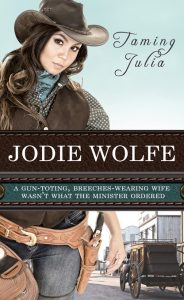 During the era, there were many such advertisements in the newspaper for a bride. My twist to the story is that the wife who arrives isn’t anything like what the minister wanted. So now he’s faced with a dilemma of what can he do to tame his new bride. It made for a fun story to write. Here’s a glimpse of the back cover:
During the era, there were many such advertisements in the newspaper for a bride. My twist to the story is that the wife who arrives isn’t anything like what the minister wanted. So now he’s faced with a dilemma of what can he do to tame his new bride. It made for a fun story to write. Here’s a glimpse of the back cover: is a collection of written works. It can be a collection of poems, plays, short stories, songs, novellas, or excerpts from longer books. These do not have to be related in any way, although often there is a theme associated with the anthology. There is not a real limit on how many – no minimum and no maximum. The works are generally chosen by a compiler, which can be a single person or a committee. An anthology generally contains works by several authors. However, there is nothing preventing an anthology containing various works of a single author. And, today, anthology may be used for a series of TV shows, or recordings of a single group or performer.
is a collection of written works. It can be a collection of poems, plays, short stories, songs, novellas, or excerpts from longer books. These do not have to be related in any way, although often there is a theme associated with the anthology. There is not a real limit on how many – no minimum and no maximum. The works are generally chosen by a compiler, which can be a single person or a committee. An anthology generally contains works by several authors. However, there is nothing preventing an anthology containing various works of a single author. And, today, anthology may be used for a series of TV shows, or recordings of a single group or performer. that royalties will not be paid. Naturally, this must be determined before the call for entries. If the project pays for the expenses of production and a surplus exists, from the beginning those submitting works should agree any profits be used either to fund the next project, or donated to help the library or some other group fostering literacy. If you have high profile authors involved, then the division of royalties should be clear before submissions are sought.
that royalties will not be paid. Naturally, this must be determined before the call for entries. If the project pays for the expenses of production and a surplus exists, from the beginning those submitting works should agree any profits be used either to fund the next project, or donated to help the library or some other group fostering literacy. If you have high profile authors involved, then the division of royalties should be clear before submissions are sought. However, it is best to have one editor. There can be a committee to help during the selection process. But when you are getting down to the final editing, while several may read for possible mistakes, a single person should be making the final decisions. Committees can get hung up with differing opinions and the project can grind to a halt. In the end, one person has to be in charge to complete the project.
However, it is best to have one editor. There can be a committee to help during the selection process. But when you are getting down to the final editing, while several may read for possible mistakes, a single person should be making the final decisions. Committees can get hung up with differing opinions and the project can grind to a halt. In the end, one person has to be in charge to complete the project. Her latest is Small Town Mystery series, Book #2 – Murder at Maple Ridge. She’s had a varied career, including managing a sporting goods department and proprietor of a resume writing service. But her passion has always been writing fiction. Here she talks about the mystery of writing.
Her latest is Small Town Mystery series, Book #2 – Murder at Maple Ridge. She’s had a varied career, including managing a sporting goods department and proprietor of a resume writing service. But her passion has always been writing fiction. Here she talks about the mystery of writing.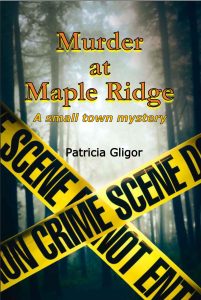 Which brings me to my newest release: Murder at Maple Ridge. Once again, an old house inspired me. One I’d driven by – and admired – for many years on the way to a park about an hour from where I live. The knowledge I gained working in sporting goods – about firearms and hunting –was invaluable.
Which brings me to my newest release: Murder at Maple Ridge. Once again, an old house inspired me. One I’d driven by – and admired – for many years on the way to a park about an hour from where I live. The knowledge I gained working in sporting goods – about firearms and hunting –was invaluable. Leeann writes contemporary romantic suspense. Missing Deposits is the eleventh title in her cozy mystery series. Leeann and Donna have published more than thirty novellas and full-length novels. They are active in American Christian Fiction Writers, Sisters in Crime and other groups. Today, she talks about forensic accounting and the mystery, and gives us a chance to receive a free book.
Leeann writes contemporary romantic suspense. Missing Deposits is the eleventh title in her cozy mystery series. Leeann and Donna have published more than thirty novellas and full-length novels. They are active in American Christian Fiction Writers, Sisters in Crime and other groups. Today, she talks about forensic accounting and the mystery, and gives us a chance to receive a free book.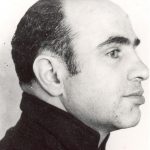
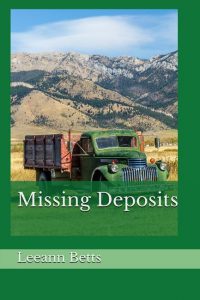


 In Deadly Additive, Donn Taylor named a secondary character who always operated on the edge, Brinkman. An accident? I don’t think so. Ian Fleming gave us some insight into the character of his antagonist in The Richest Man in the World when he named him Auric Goldfinger.
In Deadly Additive, Donn Taylor named a secondary character who always operated on the edge, Brinkman. An accident? I don’t think so. Ian Fleming gave us some insight into the character of his antagonist in The Richest Man in the World when he named him Auric Goldfinger.